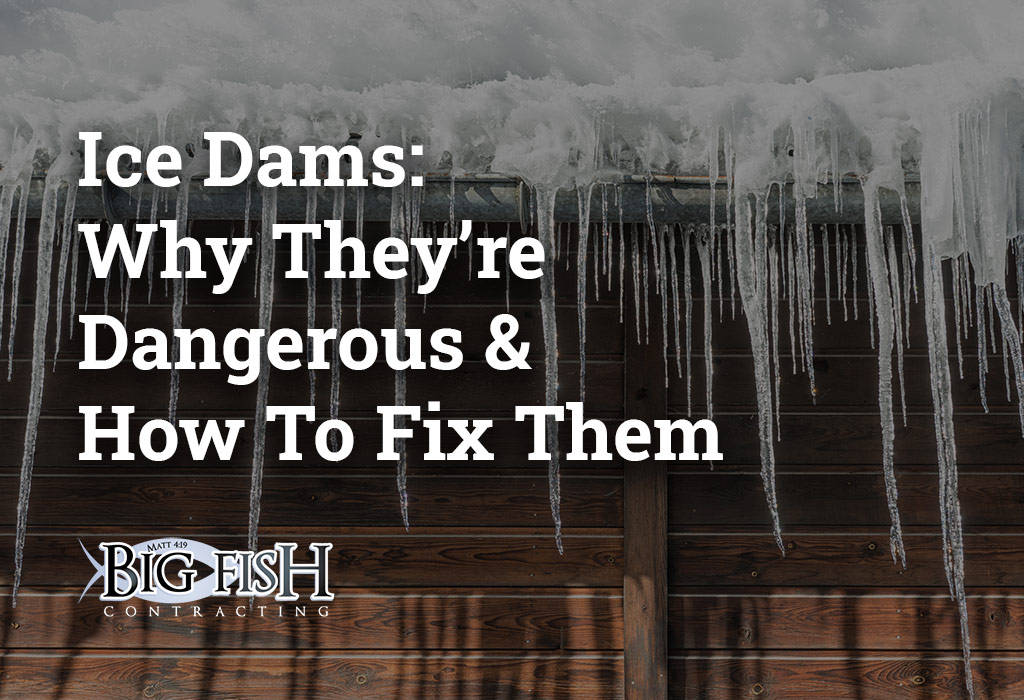Wisconsin winters are as beautiful as they are cold. While a fresh snowfall is great for sledding, snowmobiling, and making snowmen, it’s also sure to create ice dams all over your neighborhood.
We’ve had extreme amounts of ice damming this season in particular, when compared to our average winter.
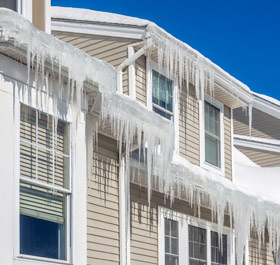
What Are Ice Dams?
Ice dams are thick ridges of ice that build up along the edge of your roof and prevent melting snow from draining off properly.
These frozen ice blocks form in the winter, especially after big snowstorms, and can cause a lot of damage to your home’s exterior and interior.
What Causes High Levels of Ice Damming?
The first two weeks of January are a perfect example of why we’re seeing unusually high amounts of ice damming. In southeastern Wisconsin, it snowed about twelve inches in just a couple of days.
This snowfall in combination with extreme temperature fluctuation throughout the rest of the week led to rapid snow melt followed by quickly freezing runoff. The temperature crept down to 15-20 degrees at night and quickly rose up to 35-40 degrees during the day.
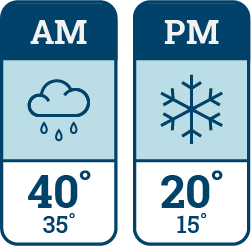
A sudden rise in temperature like this causes snow that’s built up on top of a roof to rapidly melt down into gutters and downspouts. During freezing temperatures, the dark and cold environment of the gutter and downspouts creates the perfect environment to freeze the melt off while accumulating inside the gutter itself.
The process repeats again and again until the downspouts and gutters are full of solid ice leaving the melting water with nowhere to go. The water is redirected back up into soffits or behind gutters creates a destructive dam of ice.
Why is Ice Damming Harmful?
Uncontrolled ice damming can damage your home’s exterior by loosening your shingles and even tearing off your gutters—both very costly damages.
The water build up from melting snow that can’t drain off your roof can also seep through your roofing system into your home. This can damage insulation, stain and sag ceilings, warp your floors, cause paint to peel, and lead to the growth of mold and mildew in your home.
How Do I Fix Ice Damming?
If you’ve noticed ice dams on your home, you will most likely need the help of a professional to put a stop to the problem, assess and repair the damage, and prevent ice dams from building in the future.
However, there are a few temporary solutions you can do in the meantime:
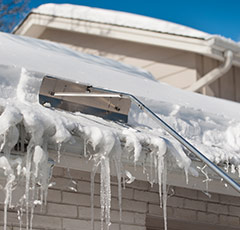
- Remove snow from your roof with a long rake (while you remain safely on the ground).
- Bring a box fan into the attic and point it at the underside of the room where the water is leaking in to help stop it from seeping through.
- Fill a pair of pantyhose with ice melt and lay it vertically across the ice dam and the gutter on your roof to create a channel for water drainage.
Remember to never repair interior damage until it is dry, and to never hack away at an ice dam with a shovel or chisel. It is dangerous for a non-professional roofer to be on a roof or ladder, especially in icy conditions – you could hurt yourself and do further damage to your roof.
How Do I Prevent Future Damage?
In addition to these temporary solutions, there are long-term solutions that you’ll need to make to regulate the temperature of your roof and/or prevent further damage from ice damming.
Long-term solutions to prevent ice dams include:
- Ventilating eaves and ridges with a ridge vent paired with soffit vents and baffles at the eaves.
- Adding the appropriate amount of insulation to your attic.
- Implementing steel flashing to the base of your chimney.
- Sealing and insulating openings such as hatches, HVAC ducts, exhaust ducts, pipes, cables, etc.
- Redirecting exhaust from your home (such as from the kitchen or laundry room) to go through the roof and walls rather than the soffit.
- Preventing sources of heat loss from your home by sealing all air leakage paths between the house and the attic and making your ceiling airtight to prevent leakage.
- Installing ice and water shields over the eave behind the gutter to seal the area behind the gutter and fascia and deter ice away from the soffit.
- Installing heat cables along your roof. (But keep in mind, you will need a dedicated outlet and to turn them on before a snowstorm, and this can negatively impact the aesthetics of your roof.)
Sometimes, even with great ventilation systems, insulation, and well-protected roofing systems, ice damming can still occur in the frigid Wisconsin winters. If the water is on the outside of your home, your roofing system is ultimately doing its job correctly.
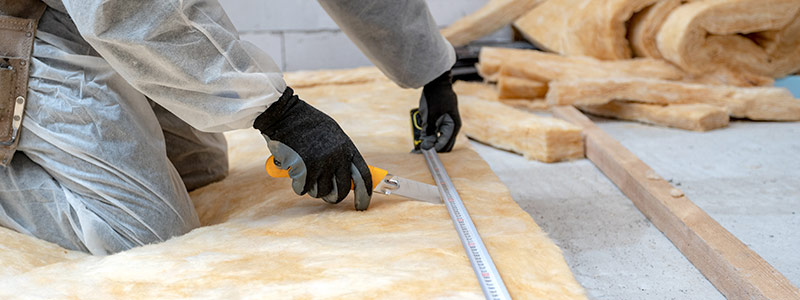
How Will I Know When Ice Dams Can Develop?
Short answer—it’s hard to say as Midwest weather is unpredictable. However, watching the forecast after a major snowstorm can help. If there are slower, more gradual warm-ups and freezes coming after a snowfall, the ice damming won’t be so extreme as when there are sharp spikes and drops in the weather.
Navigating an ice damming situation can be difficult, especially during a harsh Wisconsin winter storm. However, the damages from ice damming should not be taken lightly. In order to minimize risk to both your home and yourself, call a professional.
Big Fish Contracting is always ready to evaluate damage and provide a professional estimate to help you move forward with repairing your home.
Contact us at 262-470-1114 or erik@bigfishcontracting.com for guidance and to partner with the most trusted roofing contractor throughout Waukesha and Milwaukee counties.

